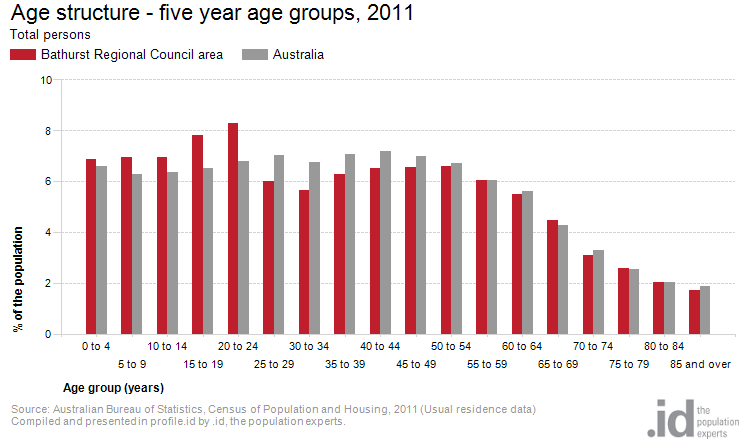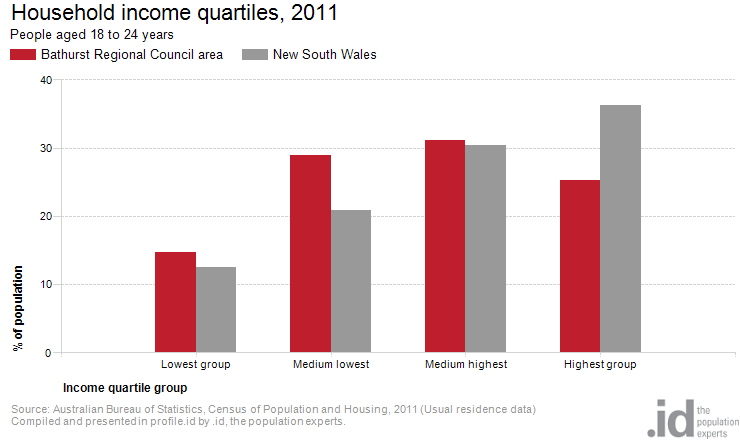As well as being famous for the 1000 motor race, Bathurst also has a large Campus of Charles Sturt University, so it is something of a student town, with a relatively large young adult population.
The Bathurst Regional Council recently engaged with .id to understand the characteristics of the young adults living in their area, and how their living circumstances compare to the total population as well as to young adults elsewhere in Australia.

In 2011, there were 4,486 people aged 18-24 in Bathurst, or 11.6% of the population, far in excess of the 8.1% recorded across Regional NSW. About one third (33.7%) were attending university (and another 9.2% attending TAFE), which is 5% higher than the state average and almost double the regional NSW average. However university attendance declined slightly between 2006 and 2011, both in absolute numbers (68 less people) and in percentage terms, as the population grew.
The local university is not a major centre for overseas students, and only 4.4% of 18-24 year olds were born outside Australia. Most of the migration of 18-24 year olds is from more remote areas of western NSW. Bathurst is a central point where regional students go to university, so the main contributors to the population growth of this group are places like Lithgow, Orange, Blue Mountains, Parkes and Dubbo. On the other hand there is a net movement out of 18-24 year olds to larger centres like Canberra, Sydney and Newcastle.
18-24 year olds in Bathurst had an unemployment rate of 11.6% in 2011. While this is marginally below the state average and declined since 2006, it still represents over 350 people in this age range looking for work. About half were looking for part-time work, probably to supplement their time at university.

Household incomes for 18-24 year olds are quite low in Bathurst, but this is because there are fewer young adults still living with Mum & Dad. With much higher proportions living in group households (almost 20%) and lone person households (7%) than the state average, only 37% of 18-24 year olds were living in families with children (most likely with their parents, but possibly with their own children), compared to 49% statewide.
Similarly, most 18-24s are renting, while nearly 80% are living in separate houses, and the remainder in medium density housing.
If you are interested in understanding each age group in your area, and also other groups like people born overseas, low income households and people with a disability, you may like to learn more about our Communities of Interest online resources. You may also like to see our video about how you can use Communities of Interest for your area.











